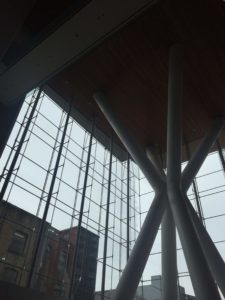 The last three post have presented some ideas for re-building a post-pandemic economy.
The last three post have presented some ideas for re-building a post-pandemic economy.
- Back to Normal – Don’t get back to normal as soon as possible, take the opportunity to think, debate, review, and plan for a smart recovery to a better quality of life.
- Reassessing What is Essential and Important – make sure the value of these goods and services are correctly reflected in wages and prices.
- Setting a New & Better Course – Once we agree on what the economy, environment, and society should look like, use governments to set direction, catalyze investments, and maintain course.
How does TBL-CBA help in this regard? Jeffrey D. Sachs (“Sustainable infrastructure after the Automobile Age,” The Boston Globe, September 26, 2016) notes that public infrastructure must be renewed “in line with new needs, especially climate, safety, and new opportunities… We should seek an infrastructure that abides by the triple bottom line of sustainable development.” Triple bottom line (financial, social and environmental) thinking encourages ethical design while updating public infrastructure to the current needs of society.
 Triple bottom line thinking allows investors, designers, and engineers to incorporate a higher standard by pushing a project beyond what is required. Incorporating the triple bottom line into infrastructure design is thinking about how transit can increase the health, food, and job opportunities to low income neighborhoods or help when deciding whether to build larger pipes to handle stormwater or green infrastructure that, like grey infrastructure, reduces flooding but also reduces the urban heat island, cleans the water and the air, and increases community property values. And taking the big picture into account will mean that we recognize the health, productivity, and reduced absenteeism benefit that sustainable design can bring to the buildings we work in.
Triple bottom line thinking allows investors, designers, and engineers to incorporate a higher standard by pushing a project beyond what is required. Incorporating the triple bottom line into infrastructure design is thinking about how transit can increase the health, food, and job opportunities to low income neighborhoods or help when deciding whether to build larger pipes to handle stormwater or green infrastructure that, like grey infrastructure, reduces flooding but also reduces the urban heat island, cleans the water and the air, and increases community property values. And taking the big picture into account will mean that we recognize the health, productivity, and reduced absenteeism benefit that sustainable design can bring to the buildings we work in.
 Optimal infrastructure design must quantify and put a dollar value on the externalities—the positive and negative spillover effects—that are not captured by market prices. We need to know who or what is harmed and who benefits so we can make the right decisions. Taking a broad perspective on costs and benefits in a triple bottom line framework means we are being considerate of others and future generations in our decisions.
Optimal infrastructure design must quantify and put a dollar value on the externalities—the positive and negative spillover effects—that are not captured by market prices. We need to know who or what is harmed and who benefits so we can make the right decisions. Taking a broad perspective on costs and benefits in a triple bottom line framework means we are being considerate of others and future generations in our decisions.
Triple Bottom Line Cost Benefit Analysis (TBL-CBA) is a systematic evidence-based economic business case framework that uses best Cost Benefit Analysis (CBA) techniques the public and the protection of the environment.” These triple bottom line outcomes are typically represented as People, Planet, Profits or Social, Environmental and Financial. The framework quantifies all of these impacts in dollars over the life of the project and discounts them to the present in order to calculate the Net Present Value of an investment from the financial viewpoint of an organization, as well as from society’s perspective.
Public infrastructure is built for the public good and professional engineers and architects are custodians of that trust when they design and build the infrastructure and buildings that will serve the public for decades to come. All governments, infrastructure planners, designers and decision makers need to adopt a triple bottom line cost benefit analysis approach for building and infrastructure decisions to ensure that users, the environment and all stakeholders are best served by a post-pandemic stimulus package.
Our post-pandemic call to arms to lead us to a better path:
- Value the environment: clean air, water, land, trees, green infrastructure, species, habitat and ecosystems.
- Be holistic – incorporate hidden costs and spillover effects into decision making.
- Value people and professions based on their societal contributions.
- Use the full carbon story: embedded carbon, carbon from construction, operations, and end of life.
- Prioritize using triple bottom line thinking: people, planet, and profit.

0 Comments